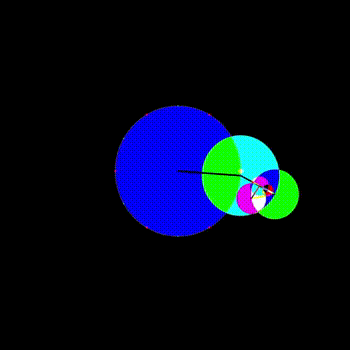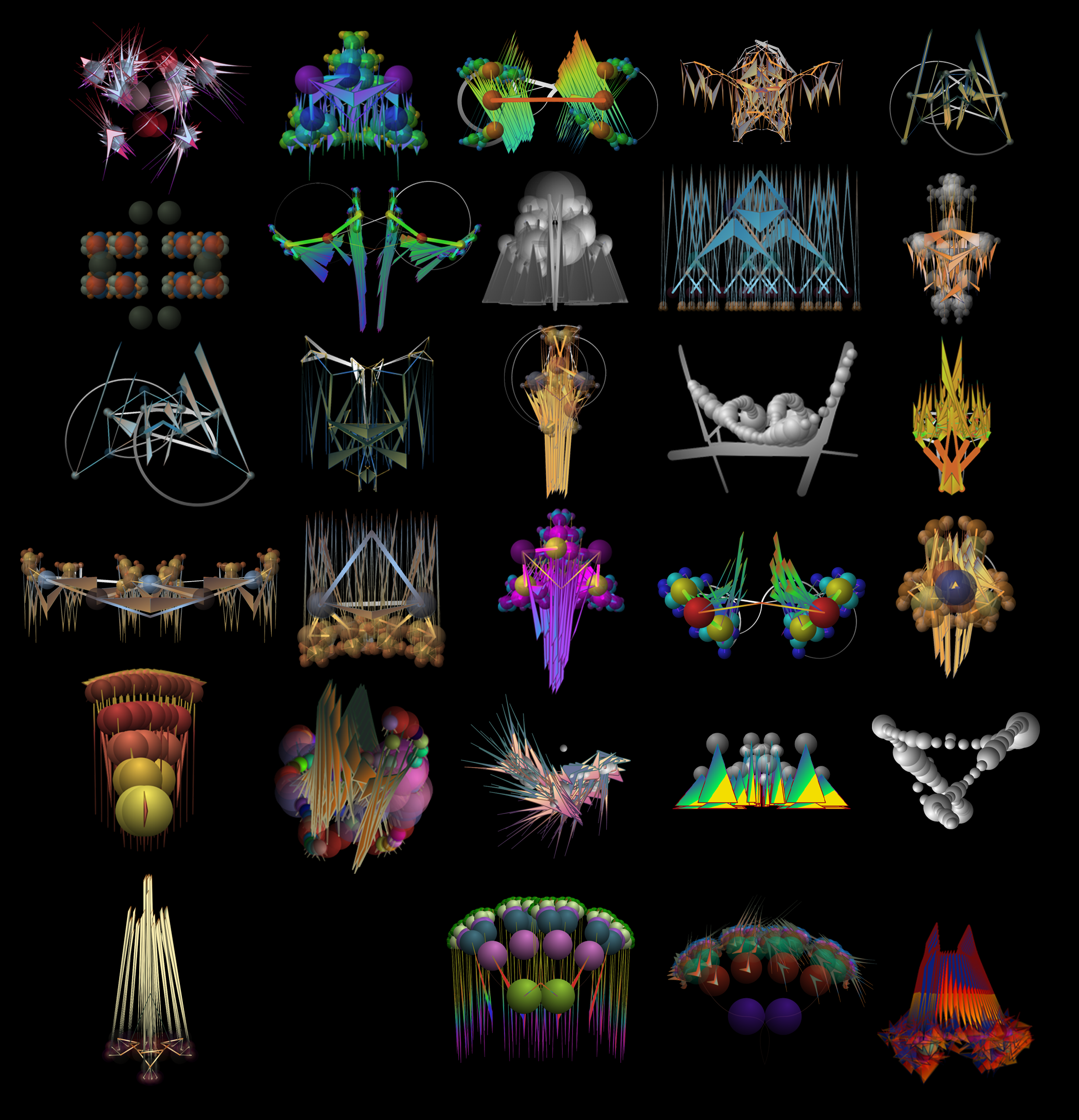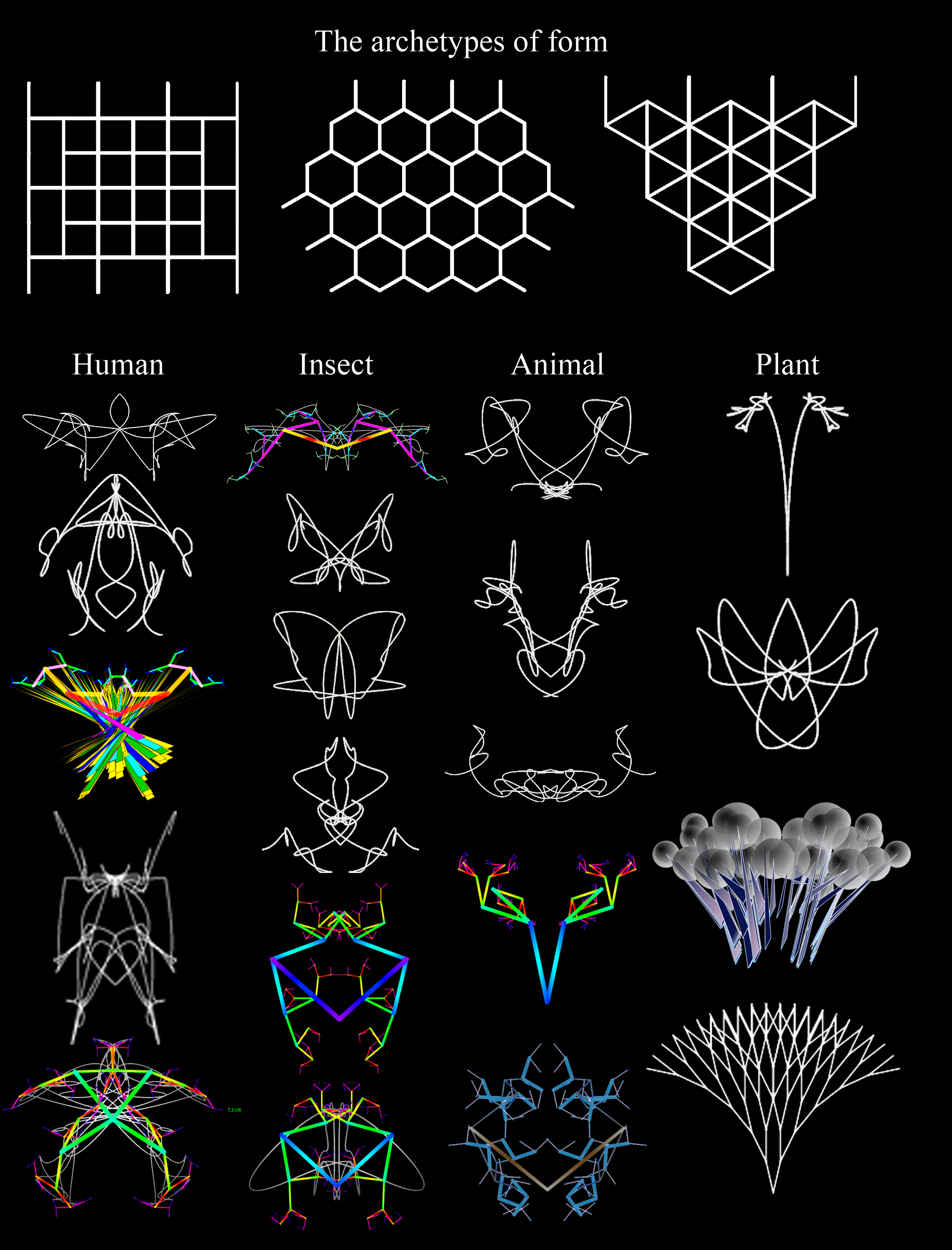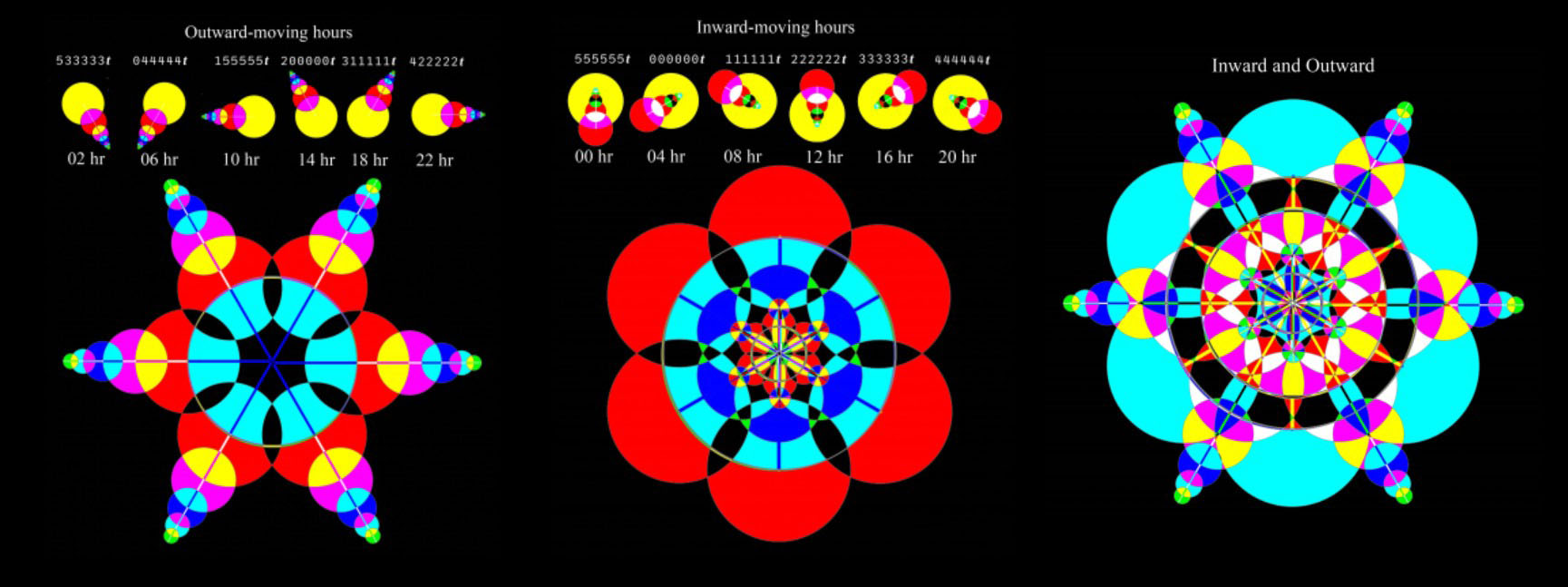NotClock
NotClock is an SVG-based clock that, rather than dividing the day into 24 parts (hours), it is divided into 6 parts. Each part is again divided by 6 parts, and so on, 6 times. This was developed as a testing and research tool for applying the ‘tholonic tree’ algorithm to different contexts. This is an ongoing project, and being a research project, it is not by any stretch finished, well-designed, efficient, or maintainable code, but it works well enough for the purposes it was built for. It has only been tested on the Brave browser. Latest version always on GitHub.
(Click for fullscreen version)
SPACE =pause |▲/▼=faster/slower | INS/DEL=increment +/-
notclock.svg is an interactive, real-time animation SVG based in a 6-generation bifurcated point (i.e., one point becomes 2 points, each of those points becomes 2 points, etc., 6 times). This is the basic model used to describe “Tholonic Expansion”, which describe the models of nature and energy, and this SVG was initially designed to be a clock based on this concept, but that seemingly simple idea turned out to be far more challenging than imagined, so that code turned into this, which is not a clock.
For instructions on how to use it, please refer to https://github.com/tholonia/notclock/blob/main/README.md
Examples
Here are just a few images out of millions that were created with this app; all of them based on the exact same ‘tree’ algorithm that creates a dataset of 126 points created by 1 point divided into 2 points, 6 times. (FYI, the polygons are formed by relationships between the same datapoints as the straight lines).
More importantly, this app also reveals patterns that appear fundamental to nature. It was for this reason that the app was written in the first place… as a tool to see if the forms of nature, i.e., the movement of energy, adhere to the rule that the simplest is always the first choice. The results were surprising and, I believe, supports the idea that the tholonic ‘tree’ algo, which we see in Newtonian physics, quantum physics, chemistry, law, society, and just about everything else, is a dominant pattern. Below are some images that suggest this. (FYI, the curved lines in the forms are quadratic and Bezier curves formed by the same datapoints as the straight lines)
NotClock’s Clock
 )Despite the name of the app, there is a built-in clock. The “clock’ version of the app applies this algo to the concept of time. The idea was to create a different perspective of time based on the same rules that dictate form and the movement of energy. Among other things, it exposes some impressive patterns that show the ‘inward’ and ‘outward’ movement of time, as shown in the images below.
)Despite the name of the app, there is a built-in clock. The “clock’ version of the app applies this algo to the concept of time. The idea was to create a different perspective of time based on the same rules that dictate form and the movement of energy. Among other things, it exposes some impressive patterns that show the ‘inward’ and ‘outward’ movement of time, as shown in the images below.
The clock divides a 24hr day into 6 parts, and each of those parts also has 6 subdivisions, and so on, for 6 generations. This creates 66, or 46,656 tholonic seconds, as opposed to the 86,400 seconds we currently use. Time is then noted similarly to our 24 hr format of H:M:S, but there are 6 values. Midnight is 0:0:0:0:0:0, 1 AM is 0:3:3:3:3:3, noon is 3:3:3:3:3:3, 6:46:50 PM is 4:2:3:3:1:3, etc.
The clock has various colors and formats available. In the default clock, as shown on the right, the lengths of the ‘hands’, and therefore the radius of the circles, are determined by the harmonic series, so lengths of the hands are 1/1, 1/2, 1/3, 1/4, 1/5, 1/6. This is just one of many options.
One of the more essential and initially confusing details of this clock is that it begins the day at 4 AM, not midnight. Traditionally, especially in folklore, this has been called the “witching hour” or “devil’s hour”, which is the time of night when supernatural events can occur, and witches, demons, and ghosts are thought to appear and be at their most potent. The reason for this legend, as well as the reason 4 AM is used here, is because 4 AM ( is when the earth’s energy is at its lowest (in that particular part of the earth). This is due to the emissions and energy dissipation accumulated and absorbed during the day. FYI, the Sun blasts the earth every second with the energy equivalent of 2750 ‘Little Boy’ atomic bombs, or 50 megatons of TNT. During the day, the earth absorbs the energy and radiates about 413.7 W/m2, and at night about 382.7 W/m2, but at night, the earth absorbs no energy from the sun. On the equator, the sun rises at 6 AM every day, but the energy of the sun begins to hit the earth before that, which we can see in the form of the light of dawn before the sun rises. Visible light begins to appear when the sun is at 18 degrees below the horizon, which is a little over an hour before the sunrise, but longer wavelengths, such as infrared, begin to appear earlier as they are easily reflected in the atmosphere, so approximately 2 hours before sunrise (in the archetypal balanced center of the planet) energy begins to return to the earth. Hence, 4 AM is the lowest energy point in the day. Likewise, and using the same reasoning in reverse, 4 PM is the highest energy in the day. These are the two poles of the day and, therefore, the two poles of the tholonic clock.
The images below show the times of the day and their inner or outer movement. The numbers above the smaller images, followed by the letter ‘*t’* are the tholonic clock times. It’s interesting to note that all the ‘inner’ time values are all incremented by 111111, but the ‘outer’ values are also incremented by 111111, starting at 044444. This is remarkable considering the significance of 4 with regard to outer instantiations of energy (material instances), which was discussed in painful detail in the book “Tholonia: The Mechanics of Existential Awareness”.
The reader may have noticed that the base circle measures opposite the other 5 extended circles, i.e., at 4 AM, the base circle, which is assigned as 0, is extending from the center to the circumference, but the other 5 circles, which are also 0, are all extending from the circumference towards the center. The reason that the 5 circles are measured opposite to the first circle is that the first circle is because it is opposite in nature from the other. It is similar to energy in that once there is a disturbance t energy, an initial impulse that creates an imbalanced state from a balanced state, all movement that follows tends back to the balanced state. This is true for all energy. Think of the first circle as the cause, and the remaining 5 circles as the cascading effects.
With cardinal increments of 111111 (which equates to 4:48 AM) and an offset between cause and effect of 044444 (which equates to 3:12 AM), we see a very interesting pattern of this delta and offset both being 48 minutes (24x3 minutes, or 77x10 seconds) on each side of 4 AM.
If we track the end-points of the hands on our tholonic clock, in the course of 24 hours, we can see that it creates a perfect hexagon. In the image below, we are tracking only the 3rd hand. Were we to track the 6th hand, the definition would be much greater, but you would not be able to see the amazing patterns that are created). With this pattern, we can create some interesting relationships. As to their value or significance, that remains to be discovered… but it is pretty ;)
Realtime Clock
Here is the clock in live mode, which should be reporting the correct time in your time zone.
(Click for fullscreen version)
SPACE =pause |▲/▼=faster/slower | INS/DEL=increment +/-
Live displays
These are “live” because they are SVG files (mini programs) running in real time, that is, these are not videos or images files. These images are being generated in real time. That means you can use the keyboard commands to control them. For example, SPACE pauses/starts the animation, Ctrl-Y toggles audio on/off, UP/DN arrow speeds/slows the animation, etc. and so on



